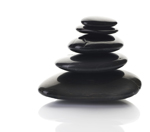-
Skipper Caspersen posted an update 6 hours, 50 minutes ago
The Ayu (Plecoglossus altivelis altivelis) population on Yaku-shima Island, Kagoshima Prefecture, Japan represents the southernmost population of the subspecies and is considered to be facing extinction. We investigated the genetic characteristics of Ayu in the Miyanoura River (MYU) in the northeast of the island and the Kurio River (KRO) in the southwest of the island, using partial sequences of mitochondrial (mt) control region and polymorphic microsatellite (simple sequence repeat SSR) loci. The mtDNA analysis revealed that the Yaku-shima Island population was significantly differentiated from other Ayu populations; additionally, the MYU and KRO populations were significantly different from each other in terms of mtDNA (pairwise ΦST = 0.5826, P less then 0.01) and SSR (pairwise ΦST = 0.1598, P less then 0.01) analyses, indicating very little or no gene flow between them. The mtDNA haplotype diversity values were minimal for KRO and somewhat lower for MYU (h = 0.8176) than for each population from the mainland of Japan (Honshu-Kyushu) and the Korean Peninsula (h = 0.9905-1.0000). The mean values of expected heterozygosity (He) of SSRs were also lower in KRO (mean He = 0.555) than in MYU (mean He = 0.649). A considerably small effective population size (Ne = 100.1 for MYU, 151.2 for KRO) and a bottleneck effect for Yaku-shima Island population were suggested by SSR analysis. These findings underscore the importance of monitoring the genetic diversity of Ayu on Yaku-shima Island and the necessity of designing conservation policies for each river’s population.Black carrots are potent sources of anthocyanin for the natural food color industry as their anthocyanins contain very high percentages of acylated anthocyanins which are much more stable than non-acylated anthocyanins. Anthocyanins are synthesized by a specific branch of the phenylpropanoid pathway activated by a triad of R2R3-MYB, bHLH and WD40 transcription factors (TFs). Recent studies in black carrots have elucidated major anthocyanin related structural genes and also regulatory TFs. However, the active TFs responsible for anthocyanin production in black carrots differ between cultivars. We have previously shown by RNAseq that DcMYB113 (LOC108213488), a R2R3-MYB TF, was up-regulated in colored as compared to non-colored tissues of the black carrots ‘Superblack’ and ‘CH05544’ and that this upregulation was positively correlated with anthocyanin content. However, this gene showed no upregulation in the black carrot ‘Nightbird’ also included in that study. In the present study, we present a novel R2R3-MYB DcMYB113_NB (LOC108212072) and a complementary bHLH DcEGL1_NB (LOC108210744) isolated from the RNA of ‘Nightbird’. Their functionality as anthocyanin regulators was confirmed by their simultaneous expression under the control of a constitutive promoter in the background of the orange carrot ‘Danvers 126’. Transformants showed activation of the structural anthocyanin genes and accumulation of anthocyanins across leaves, stems and taproots. Interestingly, the anthocyanin profile of the transformants showed increases of 20 to 30% in acylated anthocyanins as compared to ‘Nightbird’ resulting in transformants with almost 100% acylated anthocyanins.Research has demonstrated that first responders may develop psychological trauma/ posttraumatic stress disorder (PTSD) in the performance of their duties. Often overlooked in these studies of police, firefighters, and paramedics is an additional group of providers who also respond to these same events news journalists and photo journalists. Although limited in scope, the research literature from 1980 to 2010 assessed an association between PTSD and some news journalists. GSK805 The strength of these findings are limited due to serious methodological limitations. The present paper reviewed the journalist/PTSD literature from 2011 to 2020. There were 4558 subjects in 23 studies, which were world-wide in scope. There were 2633 male reporters (58%) and 1925 female journalists (42%). The average age of subjects was 34.37 years and the average length of experience was 10.68 years. Many reported either PTSD, PTSD symptoms, depression, and/or substance use. A detailed methodological critique is presented.
Despite the high incidence and mortality of cardiovascular events in hyperuricemia patients, the role of serum uric acid in cardiovascular diseases is still controversial. The aim of this meta-analysis was to explore the difference of carotid intima-media thickness in hyperuricemia and control groups.
We performed this meta-analysis by searching the PubMed, Cochrane Library, Embase and Web of Science databases up to July 2020. The 95% confidence intervals and standard mean differences were calculated to analyze the differences in carotid intima-media thickness in hyperuricemia groups and control groups. Sensitivity analysis, subgroup analysis and meta-regression were used to explore the sources of heterogeneity. Publication bias was evaluated by funnel plot and Begg’s regression test. We used Stata 14.0 software to complete our analyses.
A total of 8 articles were included. The results showed that there was a significant increase in carotid intima-media thickness in the hyperuricemia groups compared with the control groups [SMD = 0.264, 95% CI (0.161-0.366), P < 0.001]. Subgroup analyses showed that age, sample size, blood pressure and body mass index were not the source of heterogeneity. Meta-regression enrolled the method of CIMT measurement, location, age, smoking and diabetes mellitus as categorical variables, but none of these factors was found to be significant in the model. The Begg’s test value (P = 0.174) was greater than 0.05, indicating there was no publication bias.
The results showed that carotid intima-media thickness was increased in hyperuricemia patients compared with controls, which indicated that hyperuricemia patients may have a higher risk of cardiovascular diseases.
The results showed that carotid intima-media thickness was increased in hyperuricemia patients compared with controls, which indicated that hyperuricemia patients may have a higher risk of cardiovascular diseases.

